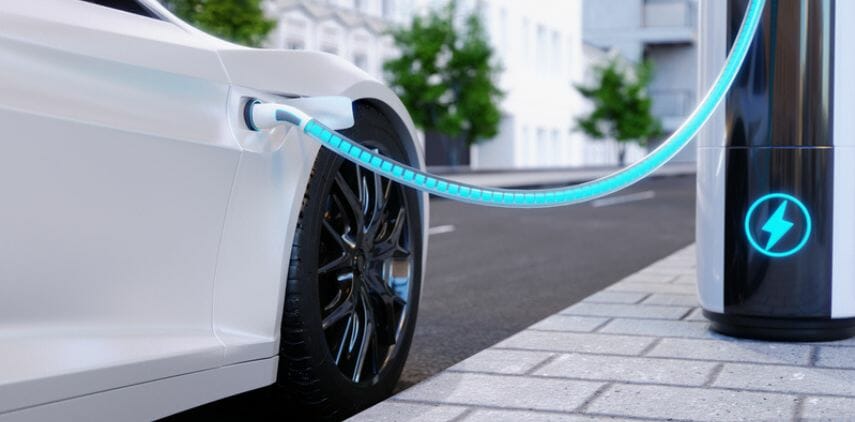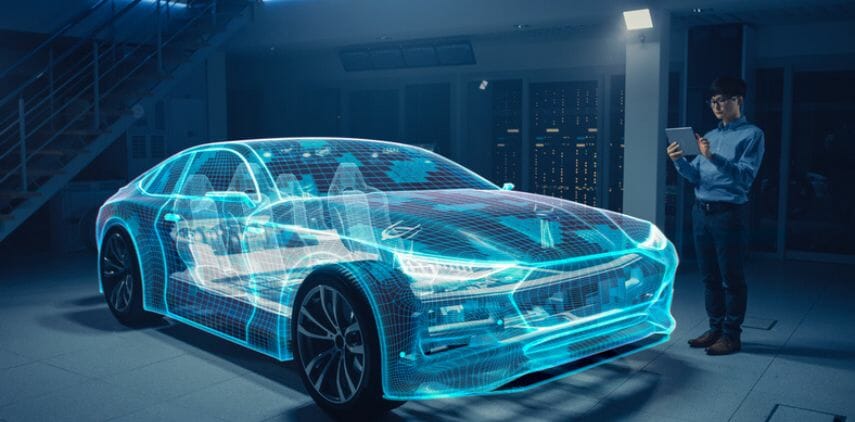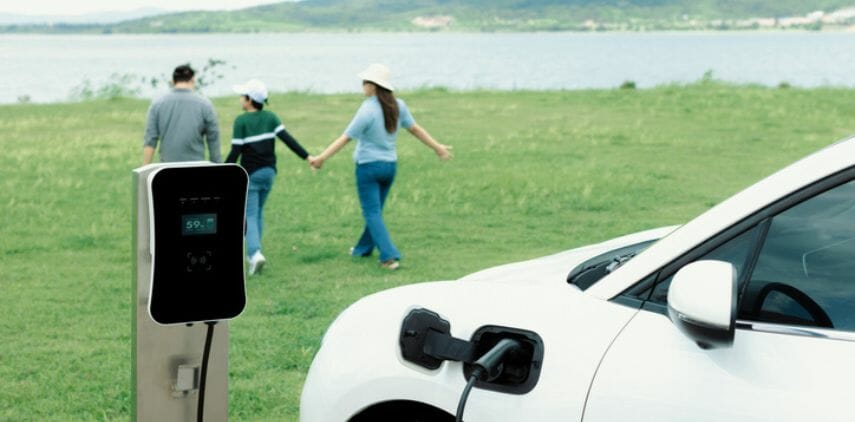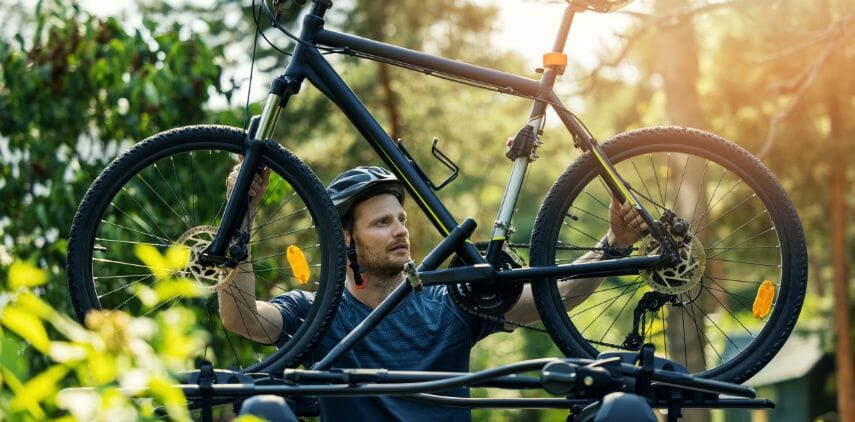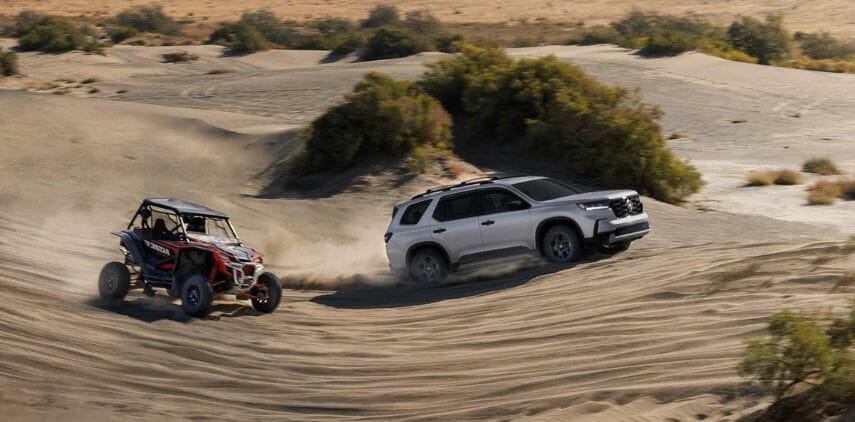You might be tempted to choose a luxury SUV with a touchscreen navigation system over a more affordable SUV with automatic braking. But safety features are critical, and riding in style isn’t as crucial as riding safely. Thankfully, you don’t necessarily need to pick between comfort or safety. Once you know the importance of vehicle safety features, you’ll be less inclined to skip them.
Table of Contents
Safety First
Driving is so ingrained into American society that it’s easy to forget how dangerous it can be. But cars aren’t inherently safe spaces: you’re piloting a vehicle that’s usually at least 2,000 pounds, if not more, at high speeds.
Most drivers will be involved in a collision, no matter how careful they are. Safety features must protect drivers and passengers in both vehicles involved, and skimping out on these can have permanent, potentially fatal consequences.
That said, you shouldn’t completely discount comfort in favor of safety. Driver comfort is crucial for safe driving because an uncomfortable driver can’t devote as much attention to driving and is more likely to get into an accident.
Luckily, many vehicle manufacturers have realized that comfort and safety don’t have to be mutually exclusive. Many modern vehicles are equipped with both safety and convenience features. The health and safety of every driver and passenger are paramount, but nobody wants to feel uncomfortable on long trips, and they know it.
What Affects Your Car’s Safety
A wide variety of factors affect how safe a car is, starting right from the manufacturing process. However, there are some key ones to look out for.
-
Age of the vehicle
It may seem obvious, but an older car is less likely to be safe than a newer one. Safety standards have evolved dramatically in just a few decades: front airbags weren’t legally mandated until 1999, and backup cameras became mandatory in 2018, so older cars are more likely to be missing critical safety features.
Older cars may also need more upkeep to run safely and are more likely to have been in a crash at some point, which can compromise the vehicle’s integrity.
-
Body protection
Many cars are built to withstand an impact to the front and rear and offer protection to the people in the driver’s and passenger’s seats. However, there’s been increasing focus on safety in side collisions and rollover crashes, which are more poorly protected: a roof with no reinforcement will crumple on impact, and having an airbag in the steering wheel doesn’t do much to protect passengers in the back seat.
Modern vehicles are more likely to be equipped with side airbags and reinforcements in the sides and roofs.
-
Size of its blind spots
Every vehicle has blind spots that aren’t covered by its mirrors. This is a bigger problem in some cars than others: larger and longer cars (e.g., full-size SUVs) tend to have bigger blind spots, which raises the risk of a collision.
A growing number of cars are being built with blind spot monitoring systems, which will alert you if there’s somebody in your blind spot.
-
Weight distribution and height
Your car’s weight distribution affects its risk of a rollover crash, which has the highest fatality rate of any type of single-vehicle crash. Cars with a lower center of gravity, like sedans, are at lower risk, but vehicles with a higher center of gravity (such as SUVs and pickup trucks) are less safe; the weight distribution elevates their risk of rolling.
There’s also a correlation between weight distribution and rollover fatality: in 2020, 30% of all SUV rollovers killed at least one person inside the vehicle, compared to 18% of car rollovers.
The height of your vehicle plays some role in its safety, too, but it’s less significant than it once was. The primary concern is keeping a safe distance: in taller cars, it’s often harder to tell where your car is in relation to something else, which means that you risk accidentally tailgating or hitting someone.
Crash protection itself used to be a bigger concern, as drivers of taller vehicles used to be better protected than drivers of smaller cars, but this discrepancy has been addressed in recent years.
How to Pick a Safe Vehicle
Cars are subject to increasingly stringent safety regulations, so it’s hard to buy or lease a vehicle that’s hazardous to simply sit in. However, that doesn’t mean every car is equally safe. If you’re considering getting a new car or SUV, you’ll want to know how to pick the safest one available.
-
Look for newer models
Vehicle safety standards have changed over the decades, and newer cars are more likely to be equipped with up-to-date safety features. Older cars can be perfectly safe, but they may have outdated safety features or have become less effective with age.
Some older vehicles may have less obvious safety flaws as well. For instance, in a collision, old SUVs are far deadlier to pedestrians and occupants of smaller cars than new SUVs because their hoods crumple in a crash.
This doesn’t mean you have to get the newest model on the market, especially if you can’t afford it, but it’s often safer to drive an SUV from 2010 than from 1996.
-
Check the model’s safety rating and recall history
You can’t tell how safe a car is by looking at it. If you’re considering a specific car, check the National Highway Traffic Safety Administration’s website; they provide information on crash-test safety, vehicle recalls, complaints about the vehicle, and any investigations. You can also check the website of the Insurance Institute for Highway Safety, which provides thorough results of crash tests and vehicle safety flaws.
Keep in mind that safety can vary even among the same lineup. The 2016 Honda Pilot received a 5-star safety rating from the NHTSA, but the IIHS’ test of the 2022 model found that the new SUV’s protection against side collisions had decreased: the driver was at higher risk of pelvis injuries, and passengers in the rear seat risked torso injuries.
-
Prioritize certain safety features
When car-hunting, you may want to put more focus on finding a vehicle with modern safety features, not just a seatbelt and airbags. While these features can’t replace cautious and attentive driving, they provide extra protection against collisions.
- Backup cameras
- Blind spot monitoring
- Automatic emergency braking or steering
- Parking sensors
-
Test-drive the car before you buy it
If you’re looking into getting a new car or SUV, ask if you can test-drive the model you’re looking at before you make a decision. Certain safety hazards, like large blind spots, can’t be identified in pictures or promotional materials. Test-driving also gives you a better feel for how comfortable the vehicle is and how well it handles, affecting how comfortable you feel.
-
Supply extra comfort if you need it
Sometimes your car is just plain uncomfortable, and adjusting the driver’s seat won’t cut it. It may help to put a cover on your seat, seatbelt, or steering wheel to provide more comfort during your commutes. You can also purchase cushions for your car seat that provide neck and lumbar support, reducing discomfort, especially on long drives.
Improving SUV Safety with SUViews
Every car owner wants to ensure they’re protected in their car. At SUViews, you’ll find plenty of safety tips on our blog, including tips for driving SUVs safely. Knowing what safety features to prioritize will help you choose the safest SUV for you.


